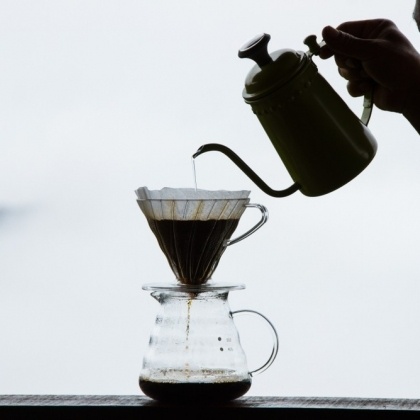The first definition of specialty coffee was coffee that expressed the microclimate of the production area, that is, the terroir, such as the climate and soil of the farm in the production area, and emphasized traceability and micro-lot production. Promotion has been carried out in this direction.
From this point of view, so-called single-origin coffee is essential for specialty coffee, and coffees that blend multiple brands do not seem to go well together.
However, recently, coffee shops and roasteries that handle specialty coffee are increasingly creating blended coffees that blend single origins together as a way to express themselves.

Premix and aftermix
It can be said that it is the privilege of a coffee shop to blend unique coffees obtained from production areas around the world to create a certain taste.
There are two ways to make blended coffee: "premix" and "aftermix."
"Premix" is a method of blending the green beans before roasting and then roasting them.
"Premix" is a method of blending the green beans before roasting and then roasting them.
Because all brands are roasted after blending, all brands are roasted to the same degree, resulting in a well-balanced finish. However, the roasting method may not be the most suitable for each brand, so you may not be able to bring out its full potential.
"After mix" is a method of roasting each brand and blending the roasted beans.
"After mix" is a method of roasting each brand and blending the roasted beans.
Since the roasting level can be adjusted to match each brand, it is possible to bring out the individual characteristics of each brand to the maximum, resulting in a more complex flavor. However, each brand is roasted separately, which is time-consuming. High-quality coffee beans, such as specialty coffee, may often be roasted using this method.
New flavors created by combining
Blended coffee used to have the image of creating a well-balanced flavor by blending brands together to make up for the weaknesses of a single brand. Masu.
Mass-produced coffee is probably still blended in this way (of course, balancing the price of coffee is also a big part of this).
On the other hand, blends made by specialty coffee shops make use of the unique flavors of each coffee, and by combining them, the purpose is to create new flavors and create coffee with more complexity.
Mixing too many brands makes it difficult to feel the individuality of each brand, so most brands are a blend of two types.
Blended coffee in this new direction is not simply created by combining ``1+1'', but instead creates flavors, aromas, and textures that are created by combining them.
Single origin focuses more on creating the flavor of the producer or production area, and blending expresses what the coffee shop, which is the blender, is aiming for, so it can be thought of as focusing more on creating the taste of those shops and roasteries. can.
Single-origin and blended coffee have different focuses on the long journey that leads to the cup, but in the end what is needed is high-quality green coffee beans, and roasting that brings out the potential of the beans. and none of them are indispensable.

The fun of blending it yourself
By the way, you can also enjoy these blended coffees by making your own "after mix."
I'm sure many of you have had the experience of mixing and brewing a single brand of coffee that you had left over on hand.
At that time, you may have had impressions unique to blends, such as that this combination didn't go well, or that it had a good flavor.
Once in a while, it might be interesting to experience the taste that can only be created with blended coffee.
Once in a while, it might be interesting to experience the taste that can only be created with blended coffee.
2023.7.22
CROWD ROASTER


